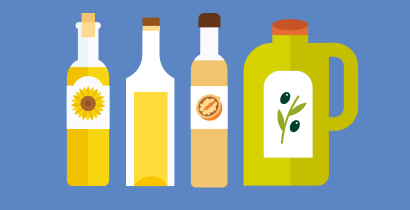Drivers of choice (2015-2018)
Last Updated : 01 December 2018In order to understand why we eat what we eat, we need to understand what makes us choose and buy these food and drink products. What are the drivers behind our choices?
EUFIC has looked at consumers from five different countries (UK, France, Italy, Poland and Turkey) and their choice behaviour for six different product categories (breakfast cereals, ready meals, yoghurt, sweet snacks, biscuits and drinks). In order to do this without leading participants or highlighting specific themes upfront, we used the laddering approach that is based on the means-end chain theory. This means that we carried out 50 in-depth interviews per country.
The two main themes that emerged are “indulgence” and “health”. Consumers are looking for an enjoyable consumption experience but they also link that consumption to a number of health benefits. However, it isn’t always the actual healthfulness (i.e., nutritional value, health benefits, portion size etc.) that makes consumers associate specific products with a health benefit. Rather, we found that it’s the way food makes us feel when we consume it.
Because of our cross-country data, we could also show that food can take on different roles in different countries. This points to cultural differences in the role food plays in our lives. There is a foods-as-nutrients approach visible in the UK data with consumers being largely driven by health considerations when choosing their foods. In comparison, Italian consumers are more balanced between health and indulgence motives, plus they display an interest in brands, specifically to support local or national production. French consumers focus mostly on indulgence and display a more holistic approach out of all five countries: they are largely driven by a desire for well-being. For Polish consumers, we find that health is the strongest driver of food purchases. Here, food takes on the role of feeding the body and providing energy so that people can go to work, be more productive and earn more money.
The results for Turkish consumers were found to be much more complex. This could be an indicator for a high involvement with food due to Oriental culture and tradition. It could refer to the importance of hospitality, wanting to take care of others and one’s family. But there are also strong indicators that Turkish consumers strive for acceptance, recognition and self-esteem/-confidence.
The one thing all participants across the five countries could agree on was what they ultimately aimed for: happiness. For most foods in most countries, happiness was considered the end-state – the desire all consumers wanted to fulfil.
We also carried out a quantitative follow-up in the same five countries, to understand the role of food choice motives as well as involvement with food in general and product category specific involvement. Our research confirmed cultural differences both in the role that food plays and in consumer involvement with food. While different food choice motives (e.g., health, convenience, mood, sensory appeal, natural content, price, weight control, familiarity and ethical concerns) varied in the degree to which they were relevant to consumers from the different countries, one striking result was that all food choice motives were most important to Turkish consumers. This finding could be corroborated by looking at consumers’ involvement with food: Turkish consumers displayed the highest involvement, followed by Italy and Poland. The lowest level of involvement with food were found among UK and lastly French consumers.
Column:
- Hieke, S. (2017). What drives food choice? Column: Consumer Perspective, Agro Food industry high-tech, Vol. 28(6). https://www.teknoscienze.com/tks_article/what-drives-food-choice/
Publication (in German):
- S Hieke, KG Grunert (2020). Wie entscheiden wir, was wir essen? Ernährungs Umschau, 67(4), M214-M223. https://www.ernaehrungs-umschau.de/print-artikel/08-04-2020-wie-entscheiden-wir-was-wir-essen/
Want to know more? Contact sophie.hieke@eufic.org



